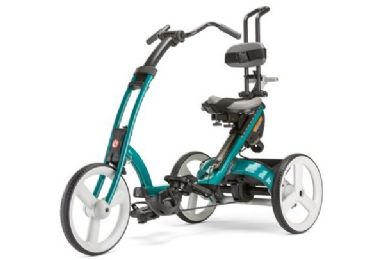
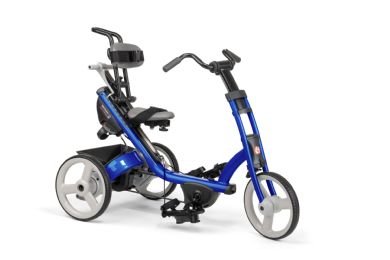

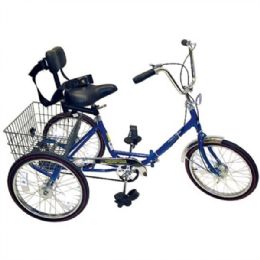
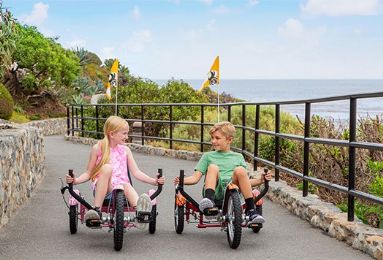
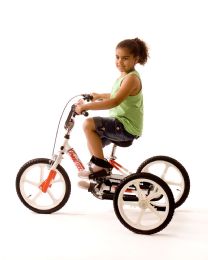
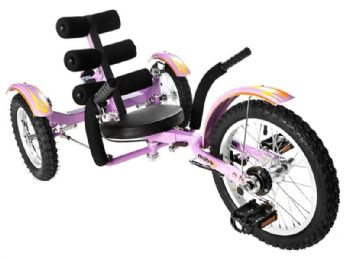
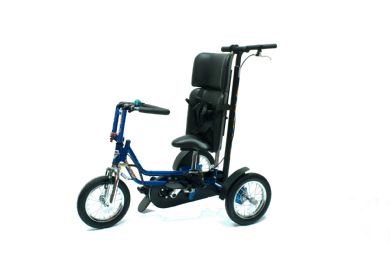
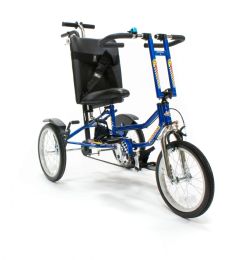






Who Uses Special Needs Bikes?
Examples of people who may need a special needs bike or adaptive tricycle are children or adults with cerebral palsy, developmental delays, muscular dystrophy, arthritis, traumatic injuries and other physical or cognitive disabilities. Because of all the recent developments in adaptive technologies, special needs bikes are able to safely accommodate a wide variety of people with limited mobility. Just because you may have to use a wheelchair does not mean you can't venture outside and enjoy the feeling of freedom and independence that comes from riding a bike.
What Kind of Special Needs Bike is Right for Me or My Child?
When selecting a special needs bike, a number of factors need to be considered. The following questions can be helpful to begin the discussion with your therapist or doctor:
What Kinds of Special Needs Bikes are Available?
Rehabmart offers a number of special needs bikes designed to accommodate individuals from toddlers to teens and beyond. There are a variety of options when choosing special needs bikes but they generally fall into two categories: special needs tricycles or recumbent tricycles.
Special needs tricycles: These specially designed trikes provide a stable and safe ride for individuals with moderate mobility issues to those who need major support and positioning. These bikes are highly adaptable with different seats, handlebars, brakes and pedals to best fit the needs of their riders. They often feature a pass through design that eliminates the center bar (commonly known as a “sissy bar”) for easy loading and unloading. Many special needs tricycles feature a rear steering bar so caregivers can help with steering and propel the bike if the child gets tired of pedaling.
Recumbent tricycles: Recumbent tricycles place the rider in a reclining position which takes pressure off the trunk and more evenly distributes the rider's weight. Recumbent tricycles come with a variety of adaptive features including optional hand pedals and one-handed steering. Its wide wheel base and low center of gravity makes it an ideal choice for children with balance issues or developmental challenges.
What Features are Included on Special Needs Bikes?
When purchasing a special needs bike, it is important to consider the many special features available to best suit your child's unique needs and requirements.
Handle bars: Padded hand grips are usually standard on special needs bikes and help the rider grip the handle safely without slippage. Loop style handlebars are also padded and may provide riders with more control and stability. Handlebars are usually height and angle adjustable for maximum flexibility. For added safety, lockable hand brakes and easy-shift gear knobs are available options.
Seats and headrests: Wide padded seats with adjustable and removable back and head rests are available with sturdy positioning straps for added stability. Pelvic supports and straps are also available.
Pedals: Self-leveling pedals with straps increase safety and stability for riders.
Other special features include dual axles and low gear ratios to reduce resistance and make it easier for riders with low muscle tone and weakness to pedal the bike. Some special needs bikes are height adjustable and will grow with the child.
Whatever special needs bike you choose, it will be sure to provide exercise and therapeutic benefits, as well as hours of fun and the feeling of freedom that can only come from riding a bike in the great outdoors!
Hulet Smith, OT
Rehabmart Co-Founder & CEO
rh